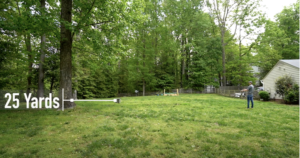You’re shooting your compound bow every chance you get, and your hard work is paying off with better scores. But just when you think you’ll soon hit a personal best, you find yourself in an unexplained slump.
Archery is challenging mentally and physically, which is part of the fun. If you’re looking to improve or break out of a rut, these five tips for shooting compound bows might help.
Find a Coach
Beginning archers can build a firm foundation by taking lessons from a certified instructor. Archery instructors teach safety, equipment use, and fundamental skills. If you want to try competing, it’s time to find a coach.
“An experienced coach can help you choose the right equipment and set it up,” said Emily Hoim, a professional compound archer from Estonia.
Coaches develop aspiring archers. They go beyond the basics, and help archers with nutrition, and mental and tournament preparations. They can look at an archer’s form and equipment to ensure everything lines up. Having a good relationship with a coach builds confidence and helps archers excel.
Hit the Anchor Every Time
Finding a comfortable anchor point is critical for consistency. Archers must pull the bowstring back to the same place on their face for each shot. Even the slightest variations cause huge differences in shooting. The anchor point lets you know you’re in the right position.
“Keep your jaw closed, even a slightly open jaw can alter a solid anchor point,” said Jessica Hortman, a competitive archer.
An anchor point shouldn’t be a single contact point. The best anchor points include a hand bone touching a face bone, the bowstring touching your nose tip, and the peep aligning with the sight house for a clear picture.
The Right Release
“The point that’s always crucial for me is the right tuning of the release and technique on the release hand,” said Teresa Wellner, a professional compound archer from Germany. “When your hand is not relaxed, there’s no way the shots will go out consistently.”
Wellner says tension can make archers “punch the trigger,” meaning they hit the release quickly instead of slowly squeezing the trigger. “Nothing beats target panic more than when you can trust your release, and know you’ll shoot relaxed shots,” Wellner said.
She also warns against flexing or hyperextending the wrist. “When your hand is relaxed, you let your back muscles do the work instead of punching with your fingers,” Wellner said.
Perfecting your release also means finding the right release-aid. For example, Wellner said she learned through trial and error that she shoots best with a four-finger release instead of three.
Never Skip a Step
Proper archery form is a series of steps that prepares the body to make the best possible shots. Following the same sequence for every arrow prevents injuries and ensures consistency. The steps become habit, but rushing or stressing makes archers get lazy.
“Check up on your routine and be strict with yourself,” Wellner said. “It’s easy to fall into a punching habit or an unnatural anchor point because in the moment it feels right, and changing things up is scary.”
From stance to follow-through, every step in the process is important. “Always remember to have fun, and trust the process,” Hoim said.
“Never force a shot,” Hortman said. “If the sight picture is deteriorating and you’re fatigued let down. Take a few deep breaths and redraw for a clean fresh shot.”
Patience Pays Off
Results don’t happen overnight. Rushing results, like rushing shots, can end in poor performance. Instead of focusing on the big picture and wondering why results aren’t where they should be, look for the problems. Analyze every arrow and step in the process to see where you can improve.
“Keep your focus on things you can control on the shooting line,” Hoim said. “Like bettering your technique and keeping the right mindset. The results will soon follow.”
If you have questions about how to shoot a compound bow or adjust its accessories, visit a nearby archery shop.



